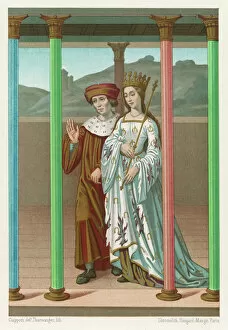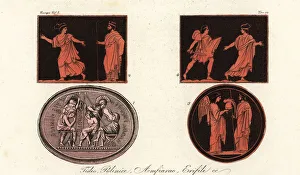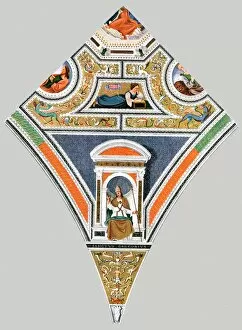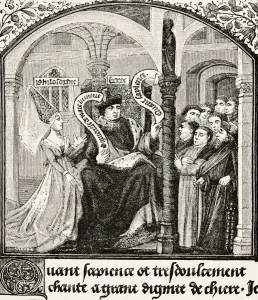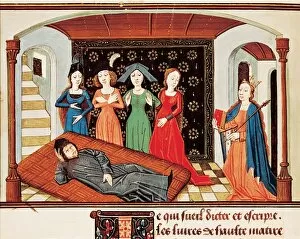Anicius Collection
Anicius: A Journey Through Concepts and Philosophy in the 15th Century In the realm of ancient wisdom, Anicius emerges as a beacon of enlightenment
All Professionally Made to Order for Quick Shipping
Anicius: A Journey Through Concepts and Philosophy in the 15th Century In the realm of ancient wisdom, Anicius emerges as a beacon of enlightenment, embodying profound concepts and philosophical ideals. Inspired by luminaries like Pythagoras and Boethius, he delves into the depths of knowledge to unravel the mysteries of existence. A portrait of Roman Emperor Marcian captures Anicius' regal presence, his gaze reflecting both power and intellectual prowess, and is within this context that we witness his fascination with depictions of The Seven against Thebes, symbolizing courage in the face of adversity. Another portrait reveals Anicius' admiration for Roman Emperor Anthemius, a leader whose vision resonates deeply with his own quest for truth. This connection serves as a testament to their shared pursuit of higher understanding. Pope Saint Gregory I's liberation of souls from purgatory through prayer strikes a chord with Anicius' belief in spiritual redemption. In an enchanting painting by an unknown artist from 1731, we witness Saint Gregory's divine intervention transcending earthly boundaries. The portrayal of Saint Gregory as Pope further exemplifies Anicius' reverence for religious figures who bridge mortal realms with celestial spheres. Created by an anonymous German artist around 1500, this artwork encapsulates the essence of faith intertwined with human experience. As we explore Santa Maria del Popolo church adorned with painted decorations from 1928, it becomes evident that Anicius finds solace in sacred spaces where art merges seamlessly with devotion. These visual expressions serve as gateways to deeper contemplation and introspection. Jean de Meung's writing delivery to King Philip IV signifies Anicius' appreciation for literary endeavors that shape societal discourse. Recognizing literature's ability to provoke thought and challenge established norms aligns perfectly with his intellectual pursuits. An iconic moment captured in a fifteenth-century manuscript depicts Boethius seeking counsel from Dame Philosophy.

